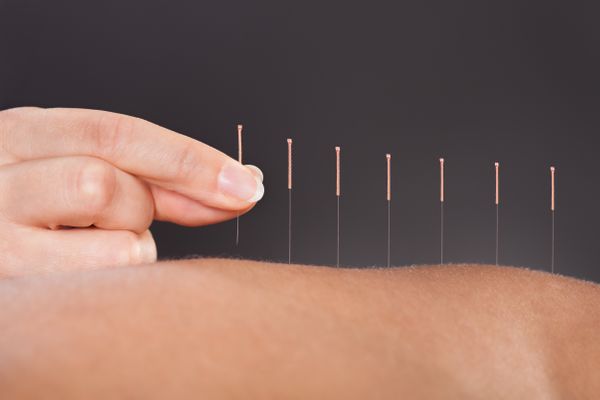Acupuncture Physical Medicine is a modern approach to acupuncture developed over the past twenty-five years by acupuncturist and founder of Tri-State College of Acupuncture Mark Seem, Ph. D. This style is inspired by the French and Japanese meridian styles of acupuncture and the trigger point teachings of Dr. Janet Travell. Sensitive areas of tight muscle fibers can form in your muscles after injuries or overuse. These sensitive areas are called trigger points. A trigger point in a muscle can cause strain and pain throughout the entire muscle.
The APM approach to treatment is aimed at relieving myofascial pain, which is pain caused by muscular irritation. The APM practitioner does not diagnose the patient with a theoretical textbook diagnosis, but rather assesses the patient through palpation of the body for myofascial constrictions (trigger points), or “holding patterns”, unique to each individual. These holding patterns are believed to be the root of the patient’s pain and dysfunction, and are discovered through the practitioner direct palpation of specific trigger points in the muscles. APM practitioners are are exposed to a detailed study of Travell’s myofascial trigger points, as well as Chinese and Japanese tight tender points (called ashi points) in order to learn how to navigate the body for areas of obstruction that can be released. Once discovered these trigger points will be released through needling of not only the local area of constriction, but also through distal points that further enhance the local treatment.
Acupuncture Physical Medicine is especially well suited for the modern athlete. This style of acupuncture is unique to athletes as it helps to eliminate pain, optimize muscle strength, and improve mobility and movement thereby increasing range of motion. Dry needling (called this since the needle does not inject a liquid medication, thus it is dry) is the best way to treat trigger points and is often more permanent than other manual trigger point therapies. Often patients don’t feel the needle insertion at all. Once the needles goes into the trigger point, the muscle “twitches” which feels like a very quick muscle contraction. This twitch response helps break the cycle of pain. Dry needling also helps stimulate your body’s own healing capabilities – most especially an anti-inflammatory effect. Here the practitioner is not seen as healer, but rather as catalyst and change-agent who mobilizes the patient’s own healing capacities.

